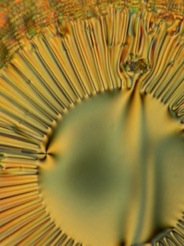Statistical Physics and Thermodynamics—a convergence science approach
Course code: 495A.625
"Statistical mechanics explains the simple behavior of complex systems." The quote is from the book used for this course, by J. P. Sethna (Cornell University, USA). We will review the foundations of statistical physics, thermodynamics and physical chemistry following a modern approach, adapted for convergence science students working in nanoscience & nanotechnology. Maintaining a constant eye on applied aspects (ranging from the properties of nanocomposites to stock market fluctuations) the course introduces, explains and discusses fundamental concepts such as random walks and diffusion; the laws of thermodynamics; the definition of entropy; Boltzmann statistics and ensembles; equilibrium vs. non-equilibrium situations; free energy/chemical potential definitions and their usages; temperature and the energy equipartition theorem; phase transitions and phase diagrams of unimolecular as well as mixture systems; symmetry analysis, order parameters and topological defects.
The course will be based heavily on the modern and excellent text book and a number of complementary hand-outs (reading the weekly texts is required throughout the course!), with classroom meetings being more discussion and analysis of the texts than traditional lecturing. Students will be given study questions and analysis tasks for each meeting and the class will discuss these during the meeting, with the professor supporting the learning and understanding. The zero weight for "attendance" does not mean that attendance is not required, only that passive attendance gives no credits. The active participation is a key component of the course, contributing to the scores for “Tasks” and “Academic attitudes”, in order to optimize learning and make the course as fun as it should be.
Main course book
Course book: James P. Sethna ‘Entropy, Order Parameters, and Complexity’ (Oxford University Press 2006).
Some scientific journal articles of high current relevance and excerpts from other textbooks, dealing in particular with topics of physical chemistry, will be distributed and discussed throughout the course.
Spring semester 2013
The class is scheduled for Tuesdays and Thursdays 15:30-16:45, but during the first lecture, on Tuesday 5th of March at 15:30 in room 43-1-302 (Gwanak campus), we will discuss the schedule with all attending students and possibly reschedule according to what is most convenient for everybody.
PDFs of slides shown during the lectures will be available for download from the course resources page once the course has started.
Schedule (week by week):
- Introduction to the course and fixation of schedule. Random walks, diffusion, heat conduction and polymer conformation. Fractals.
- Biased random walks and the effects of gradients. Osmosis. Stock price fluctuations. The central limit theorem. Percolation: from gelation of nanoparticle colloids to optimization of nanocomposites.
- Temperature and pressure; how do we define them? Enthalpy, internal energy, heat, work and the first law of thermodynamics.
- Entropy in physics, chemistry, engineering, information theory and society. The quantification of ignorance. The second law of thermodynamics: there is no such thing as a free lunch.
- Oral mid-term exam 1.
Gibbs and Helmholtz free energies; chemical potential. - Ensembles and the equipartition theorem. Boltzmann statistics. Equilibrium and non-equilibrium.
- Stable vs. metastable states; kinetic stabilization. Fluctuations and the kinetics of equilibria (physical processes and chemical reactions); mass-action law; Arrhenius behavior.
- Phases and phase diagrams; mixtures and Gibbs' phase rule. Colligative properties: boiling point elevation and freezing point depression.
- Introduction to symmetry analysis and to some useful tools of the trade. Order parameters, broken symmetries and topology.
- Oral mid-term exam 2.
The concept of a phenomenological theory. The Ising model. - Markov chains. XY and clock models. Homotopy theory and topological defects; dislocations and disclinations.
- Abrupt and continuous phase transitions (first and second order types). Nucleation phenomena. Coarsening and spinodal decomposition.
- Critical fluctuations and the critical point. Critical point drying. Glass transition and jamming. Avalanches and earth quakes.
- Course review. Additional topics of interest.
- Final exam (oral)
Welcome !
Back to teaching overview

